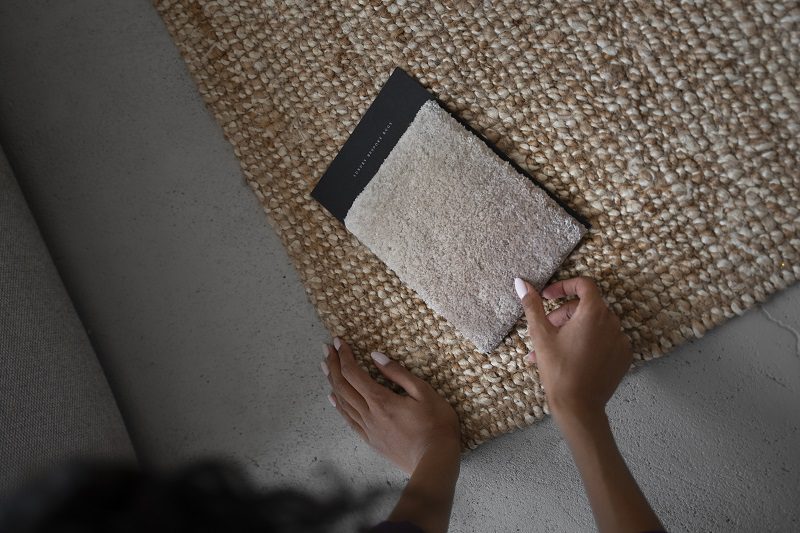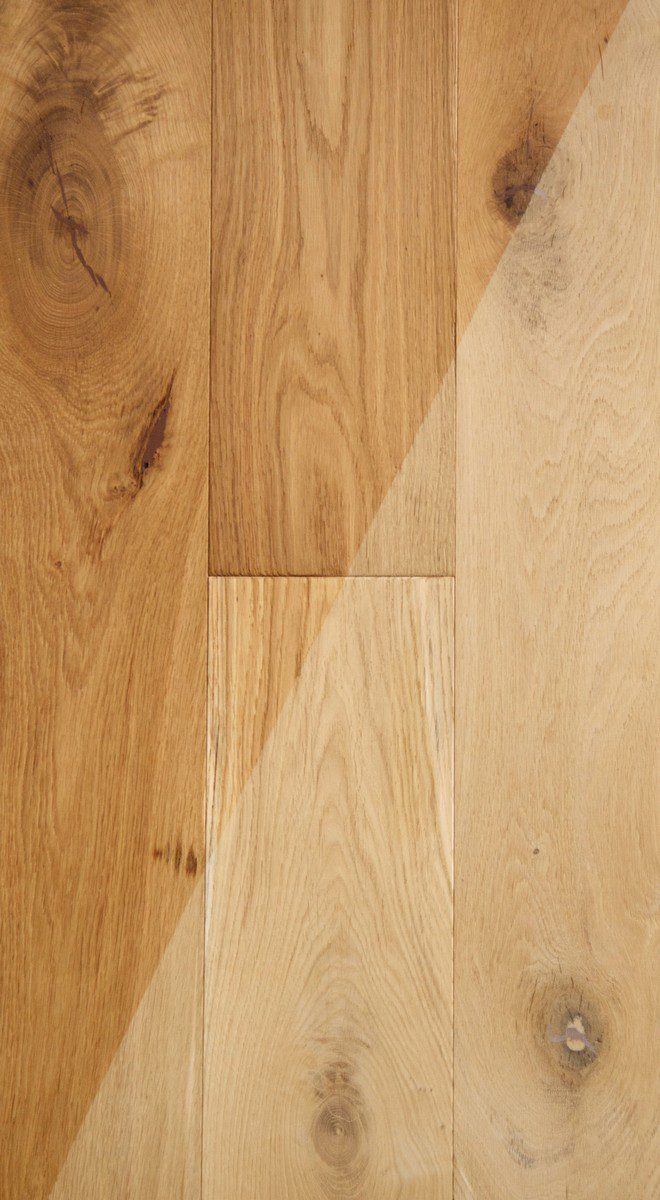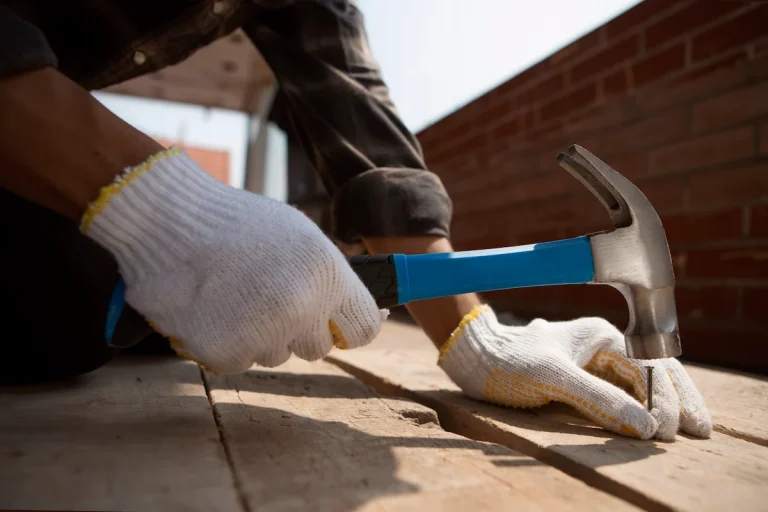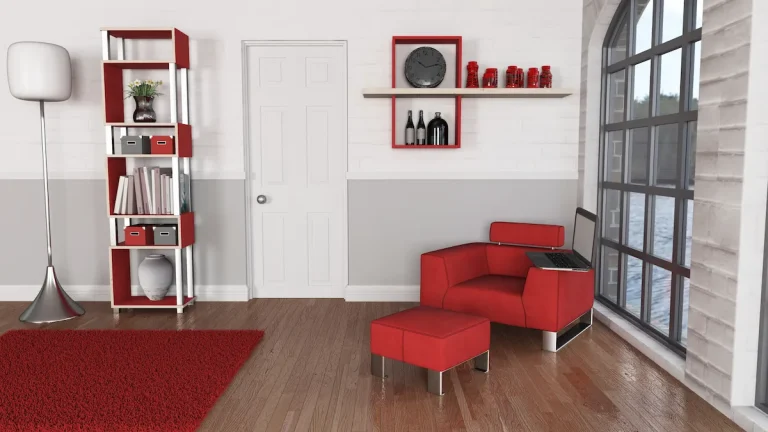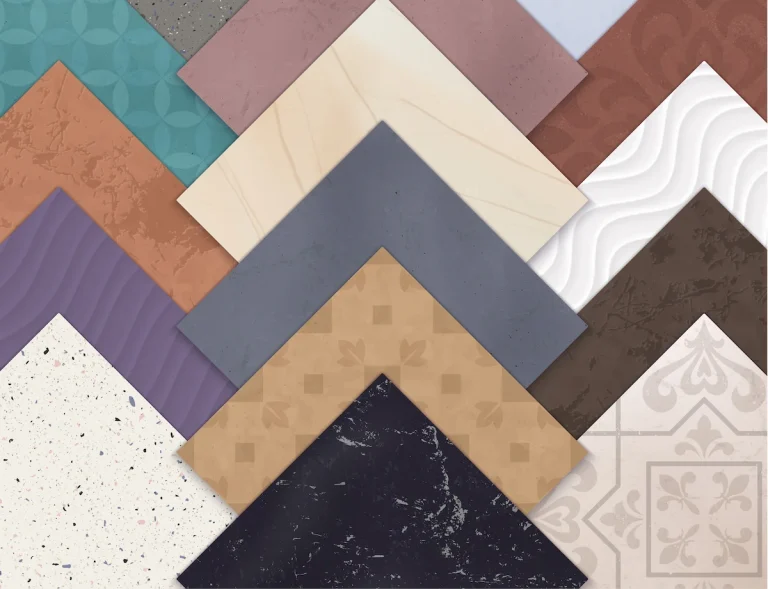If you want to update the flooring in your home or office, carpet tiles could be the perfect solution for you. We discuss everything you need to know about carpet tiles, from why they are a great choice to the tools needed for installation. So, how to install carpet tiles?
Our step-by-step guide covers preparing the floor, measuring and cutting the tiles, installing them, and finishing the installation process. Transform your space with stylish and durable carpet tiles!
Tools that are Needed for Installing Carpet Tiles
Talk about how to install carpet tiles, there are specific tools to ensure a smooth and successful installation process. These tools include a tape measure, chalk line, utility knife, carpet adhesive, trowel, knee-kicker, carpet roller, and stair tool.
1. Tape Measure
A tape measure is an essential tool for accurately measuring the dimensions of the room where the carpet tiles will be installed. It ensures precise cuts and proper fitting of the tiles.
Without accurate measurements, the installation process can result in unnecessary material wastage and a less-than-ideal finish. Incorrect measurements can lead to gaps between tiles or overlapping, which not only affects the aesthetic appeal but also compromises the durability and functionality of the flooring.
2. Chalk Line
A chalk line is used to create straight guidelines on the subfloor, helping to align the carpet tiles correctly during installation. It ensures a neat and uniform layout.
By snapping a chalk line, installers can establish a reference point that guarantees the tiles are laid out in a precise pattern, minimising errors and ensuring a professional finish. The use of a chalk line also speeds up the process by providing a clear visual guide, allowing for efficient and accurate placement of the tiles. The straight lines created by the chalk ensure that the overall look of the flooring is visually appealing and organised, adding to the aesthetic appeal of the space.
3. Utility Knife
A utility knife is essential for cutting carpet tiles to fit around edges, corners, and obstacles in the room. It allows for precise and clean cuts for a professional finish.
When working with carpet tiles, accuracy in measurements is crucial to avoid gaps or overlaps that can detract from the overall aesthetics. The utility knife enables installers to make precise cuts, ensuring that every piece fits snugly into place.
The flexibility of a utility knife allows for adjustments on the fly, accommodating any unexpected angles or curves in the room layout. This adaptability is particularly handy when dealing with irregular spaces or intricate designs.
4. Carpet Adhesive
Do you need to glue carpet tiles? Carpet adhesive is used to secure the carpet tiles to the subfloor, providing a strong bond that prevents shifting or loosening over time. It ensures a durable and long-lasting installation.
When applying carpet adhesive, it is essential to follow the manufacturer’s instructions to achieve optimal performance. Whether using a trowel, roller or spray application method, ensuring an even coverage is key to a successful installation. The drying time of the adhesive varies depending on factors such as humidity levels and subfloor material.
Proper drying time is crucial to ensure the carpet tiles are firmly bonded to the subfloor, allowing for foot traffic and furniture placement without any issues. Securing the carpet effectively with adhesive not only enhances the overall look of the space but also contributes to its longevity and durability.
What if you do not use glue or adhesive? how to install carpet tiles without glue? Installing carpet tiles without glue typically involves using a peel-and-stick backing or a special adhesive backing that adheres to the floor without the need for additional glue.
5. Trowel
A trowel is used to spread the carpet adhesive evenly on the subfloor before placing the carpet tiles. It helps achieve proper coverage and adhesion for a sturdy installation.
By ensuring an even distribution of adhesive across the subfloor, the trowel plays a crucial role in creating a uniform bond between the carpet tiles and the surface beneath.
Consistency in adhesive application is key to avoiding potential issues like air gaps or uneven adherence, which could lead to premature wear and tear of the carpet tiles.
Using a trowel allows for better control and precision, enabling installers to optimise the amount of adhesive applied for maximum bond strength.
6. Knee Kicker
A knee kicker is a tool used to push carpet tiles into place along the edges and seams, ensuring a tight fit and professional finish. It aids in stretching the carpet for a smooth appearance.
By leveraging the force exerted by stepping on the padded end of the kicker, installers can easily adjust the position of the carpet tiles to align them precisely. This adjustment is crucial to eliminate bulges or gaps between the tiles, achieving a uniform and flawless surface. The knee kicker works hand in hand with other tools like a stretcher to ensure every square inch of the carpet is perfectly secured to the subfloor. This precision in placement ultimately contributes to the durability and longevity of the carpet installation.
7. Carpet Roller
A carpet roller is used to apply pressure evenly across the installed carpet tiles, helping to bond them securely to the subfloor. It eliminates air pockets and ensures proper adhesion.
Using a carpet roller during the installation process is essential for achieving a flawlessly smooth and professional finish. The even pressure it applies not only helps in flattening the tiles but also ensures that they are securely adhered to the subfloor, preventing any shifting or loosening over time.
By eliminating air pockets and potential wrinkles, the carpet roller plays a vital role in preserving the aesthetic appeal of the flooring. Its impact goes beyond mere adhesion, greatly contributing to the overall durability and longevity of the carpet installation.
8. Stair Tool
A stair tool is specifically designed for neatly tucking carpet tiles into the corners and edges of stairs, creating a clean and professional look. It aids in achieving a seamless transition on staircases.
By using a stair tool, installers can ensure that each piece of carpet tile fits snugly and precisely, reducing the chances of any gaps or uneven edges. This tool allows for a tailored and polished appearance, enhancing the overall visual appeal of the staircase.
The efficiency of a stair tool saves time during the installation process, as it streamlines the task of fitting the carpet tiles with accuracy. This attention to detail results in a finished look that is not only aesthetically pleasing but also durable and long-lasting.
How to Install Carpet Tiles
Installing carpet tiles is a simple and flexible way to upgrade your flooring. From the preparation process to the finishing touches, here are the steps on how to install carpet tiles.
A. Preparing the Floor
Properly preparing the floor before installing carpet tiles is crucial for a successful and long-lasting result. This involves cleaning the floor, repairing any damage, and removing skirting boards to create a smooth and even surface.
It is essential to ensure that the floor is not only clean but also level as any bumps or unevenness can cause issues during installation and affect the overall look of the carpet. Addressing any subfloor issues such as moisture or cracks is vital to prevent future problems. By taking the time to properly prepare the floor, you are laying a solid foundation for the carpet tiles, ensuring a professional finish and extending the lifespan of the flooring.
1. Clean the Floor
Cleaning the floor thoroughly is essential before installing carpet tiles to remove dust, debris, and any residues that could affect the adhesion of the tiles. It ensures a clean and stable foundation for installation.
When the floor is properly cleaned, it allows the carpet tiles to adhere securely, reducing the risk of them shifting or coming loose over time.
Proper floor maintenance also plays a crucial role in extending the lifespan of carpet tiles by preventing premature wear and damage caused by dirt buildup. A well-prepared surface not only enhances the overall aesthetics of the space but also contributes to a healthier indoor environment by minimising allergens and mould growth. By investing time and effort in floor cleaning, you are laying the groundwork for a durable and visually appealing flooring solution.
2. Repair Any Damage
Inspect the floor for any damage such as cracks, holes, or uneven areas, and repair them before installing carpet tiles. This ensures a smooth and stable surface for the tiles to adhere to.
Common issues that often go unnoticed in damaged floors include water damage, rotting wood, or structural instability, which can compromise the integrity of the entire flooring system.
By addressing these issues promptly, you not only prevent further damage during the installation process but also ensure the longevity and durability of your carpet tiles.
3. Remove Skirting Boards
Removing skirting boards along the edges of the room is necessary to allow the carpet tiles to fit snugly against the walls. This step ensures a clean and professional finish after installation.
By carefully lifting off the skirting boards, you create the space needed for the carpet tiles to be positioned properly, eliminating any gaps or uneven edges. Not only does this enhance the visual appeal of the room, but it also simplifies the installation process, allowing for a seamless transition between the floor and the walls.
Once the skirting boards are removed, you can proceed with laying down the carpet tiles without any obstacles, ensuring a neat and polished look to the entire space.
B. Measuring and Cutting
Accurate measurement and precise cutting of carpet tiles are essential for a seamless and professional-looking installation. This involves measuring the room dimensions and cutting the tiles to fit the layout.
1. Measure the Room
Before laying carpet tiles, accurately measure the length and width of the room to determine the quantity of tiles needed. This step ensures proper coverage and minimizes wastage.
Ensuring precise room measurement is essential as it not only helps in determining the required quantity of tiles but also plays a crucial role in optimising tile usage. By accurately calculating the dimensions of the room, one can avoid situations where tiles may fall short or excess material is left unused, leading to a more efficient installation process. Accurate measurements contribute to achieving a uniform appearance, avoiding unsightly gaps or irregular patterns that may occur due to incorrect estimations.
2. Cut the Tiles to Fit
Using a utility knife, cut the carpet tiles according to the measurements of the room, making precise cuts to fit corners, angles, and edges. Proper cutting ensures a seamless and tailored installation.
One crucial aspect to keep in mind is the importance of using a sharp blade in the utility knife to achieve clean cuts without fraying or damaging the carpet fibres. Accuracy is key when cutting carpet tiles, as even small inaccuracies can be noticeable once laid down.
Employing a straight edge or ruler can help guide your cuts, ensuring straight lines and accurate dimensions for a polished look. Remember, taking your time during the cutting process can lead to a more professional finish that enhances the overall appearance of the space.
C. Procedure
How to fit carpet tiles? Installing carpet tiles is a systematic process that begins at the centre of the room and involves laying the tiles in a staggered pattern. Adhering the tiles securely with adhesive is essential for a durable installation.
Ensure that the subfloor is clean, dry, and level before starting the installation. Begin by locating the centre of the room using a chalk line, where two lines intersect is your starting point. Lay out the tiles in a dry run without adhesive to create the desired pattern. Apply pressure to each tile to ensure a strong bond with the adhesive. To achieve a professional finish, trim tiles as needed to fit along the edges of the room.
1. Start at the Centre of the Room
Commencing installation from the centre of the room helps ensure a balanced layout and enables adjustments for symmetry along the walls. It sets the foundation for a well-aligned installation.
Starting from the centre allows you to make real-time adjustments as you work your way towards the edges, ensuring a professional finish. By laying down tiles methodically outward from the centre, you create a visual balance that enhances the overall appearance of the room.
Beginning from the centre helps to minimise cutting and trimming at the edges, as well as reducing the chances of ending up with small, awkwardly sized tiles in corners and along walls. This approach streamlines the process and facilitates a more efficient installation.
2. Lay the Tiles in a Staggered Pattern
Creating a staggered pattern when laying carpet tiles involves offsetting each row to prevent continuous seams. This technique enhances the aesthetic appeal and structural integrity of the installation.
Offsetting the tiles not only helps in creating a more visually appealing design but also serves a functional purpose by distributing wear and tear more evenly across the floor. With a staggered layout, the seams between the tiles become less noticeable, resulting in a more seamless overall look.
The irregular arrangement of tiles introduces an element of visual interest, breaking away from the monotony of a uniform grid pattern. This technique allows for creativity in design, offering versatility in creating unique flooring layouts.
3. Use Adhesive to Secure the Tiles
Applying adhesive underneath each carpet tile ensures a strong bond with the subfloor, preventing movement or shifting. Proper adhesive application is vital for the longevity of the installation.
During the application process, it’s crucial to follow the manufacturer’s instructions concerning the type of adhesive to use and the amount required per square meter. The adhesive should be spread evenly using a trowel, making sure to cover the entire underside of the tile. Allow the adhesive to cure properly, adhering to the recommended drying time before placing any weight or traffic on the tiles.
Maintenance considerations are also essential to sustain the integrity of the installation. Regularly inspecting the seams and edges for any signs of lifting or wear can help address potential issues early on. In case of any damage or loosening, prompt repairs with additional adhesive can prevent further complications.
D. Finishing
After installing carpet tiles, finishing touches are essential to ensure a polished result. Trimming excess carpet, reinstalling skirting boards, rolling the carpet for adhesion, and allowing the adhesive to dry are crucial steps.
1. Trim the Excess Carpet
Trimming surplus carpet along the edges of the room with a utility knife ensures a tidy and precise finish. It helps achieve a smooth transition between the tiles and the walls.
When surplus carpet is left untrimmed, it can result in a dishevelled and unprofessional appearance in the room. The process of trimming involves carefully cutting off the excess material along the edges, creating a tidy edge that gives the room a refined appearance. By ensuring that the carpet aligns perfectly with the walls and other flooring materials, the overall aesthetic of the space is significantly enhanced.
2. Reinstall Skirting Boards
Reinstalling skirting boards along the perimeter of the room conceals the edges of the carpet tiles and provides a finished look. It also protects the tile edges from damage.
Skirting boards come in various styles and materials, allowing homeowners to choose options that complement their interior design. When reinstalling skirting boards, it’s essential to ensure they are securely attached to the walls for long-term durability. Skirting boards can hide any gaps between the walls and the flooring for a more polished appearance. The process involves measuring, cutting, and painting the skirting boards to seamlessly blend with the existing decor. Properly installed skirting boards add a cohesive and professional finish to the overall carpet tile installation.
3. Roll the Carpet to Ensure Adhesion
Using a carpet roller, apply pressure across the installed tiles to ensure they adhere firmly to the subfloor. Rolling eliminates air pockets and enhances the bond for a secure installation.
When rolling the carpet, make sure to exert even pressure throughout the surface, moving in a back-and-forth motion. This action not only helps in the adhesion of the tiles but also aids in flattening them, ensuring a smooth and professional finish. Consistent pressure should be applied to iron out any bumps or wrinkles, resulting in a visually pleasing and well-installed carpet. By following this simple step post-installation, you can guarantee a durable and long-lasting flooring solution.
4. Allow the Adhesive to Dry
After completing the installation, allow the adhesive to dry completely as per the manufacturer’s instructions. Adequate drying time is crucial for the tiles to set and bond securely.
Properly drying the adhesive not only ensures a strong bond between the carpet tiles and the subfloor but also plays a significant role in enhancing the overall stability and longevity of the flooring.
Skipping or rushing through this essential step can compromise the structural integrity of the installation, leading to potential issues like loose tiles, uneven surfaces, or premature wear and tear.
That’s all about how to install carpet tiles you need to consider from selecting the right adhesive to ensuring proper alignment and pattern continuity.
Additionally, understanding the subfloor condition and preparing it accordingly is crucial for a seamless installation process. Lastly, post-installation maintenance routines are essential for preserving the longevity and appearance of your carpet tiles.
Should you require assistance with carpet tile installation, don’t hesitate to reach out to TEKA Flooring. We’re here to help make the process seamless and stress-free for you with our professional fitting services. Having over 30 years of combined experience, we are very confident in the quality of our work. So, there’s nothing for you to worry about!
Read Also:
- A Complete Step-By-Step Wood Floor Installation Guidelines
- Types of Underlay for Carpet Tiles and Installations Tips
- Does Flooring Installation Include Removal? Find Out Here!


























